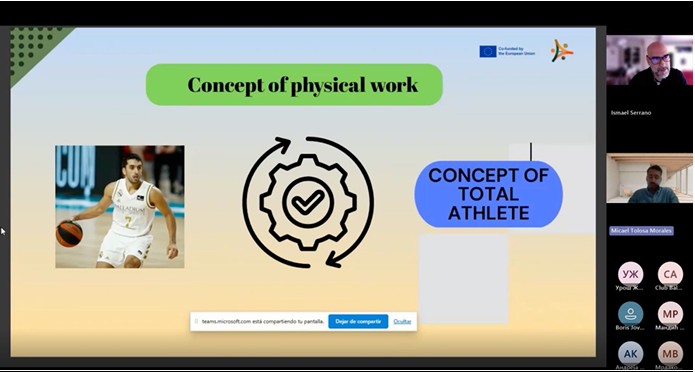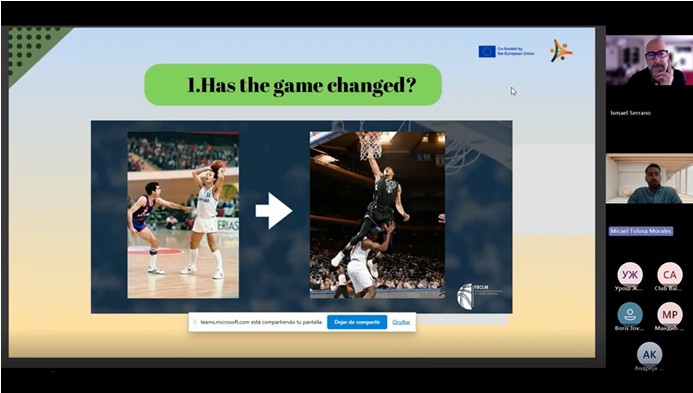Physical training in basketball
On April 30, 2025, as part of the knowledge transfer and educational activities of the Basketball-KTN project, the Federación Baloncesto de Castilla-La Mancha hosted a specialized presentation by Coach Micael Tolosa Morales on the topic of Physical Training in Basketball. The session explored the growing importance of physical preparation in modern basketball, a sport that has evolved into a faster, more intense, and physically demanding game than ever before.
Coach Tolosa Morales began by emphasizing that physical training must no longer be treated as a separate or secondary part of athletic preparation. Instead, it should be fully integrated with technical and tactical exercises, forming a comprehensive approach to player development. This integration ensures that physical conditioning aligns with the cognitive, emotional, and social aspects of the athlete — creating a training system that supports the player as a complete individual, not merely a performer.
The main objectives of physical training in basketball were outlined as threefold: to maintain player health and availability throughout the season, to enhance fundamental physical abilities, and to enable athletes to execute game actions as efficiently as possible. These core abilities — speed, strength, flexibility, coordination, and endurance, along with psychological and cognitive resilience — form the foundation of high-level basketball performance. The ultimate goal, the coach noted, is to cultivate the “total athlete” — one who is physically, technically, mentally, and emotionally complete.
Modern basketball, the presentation highlighted, is characterized by high-intensity intermittent activity, with alternating phases of explosive movement — such as sprints, jumps, and defensive slides — and brief recovery intervals. Games demand both aerobic and anaerobic capacity, with heart rates often remaining between 160 and 195 beats per minute, and bursts of maximum effort typically lasting under two minutes. Different positions require distinct physical profiles: guards perform more sprints and lateral movements, while forwards and centers rely on power, jumping ability, and contact near the basket. Despite these variations, the sport increasingly trends toward producing “total players” — versatile athletes capable of adapting to multiple roles.
Coach Tolosa Morales detailed how specific training elements contribute to these outcomes. Strength training should involve general strengthening circuits emphasizing pushing, pulling, lower-body, and core exercises. Endurance work must be carefully adjusted according to the season phase, match calendar, and game intensity. Speed developmentshould take place at the start of training sessions, when players are most fresh, using stimulating, high-intensity drills. Flexibility training, essential for injury prevention, should become a consistent habit — dynamic stretching before training and static stretching afterward.
The organization of weekly and daily training sessions was also discussed. Heavier physical loads should be placed in the first half of the week, tapering as game day approaches. Planning must consider the competition schedule, previous match outcomes, and scouting information for upcoming opponents. Each week (microcycle) should have a general objective, while each individual session should carry a specific purpose supported by detailed design and progression.
A typical basketball training session, as described, begins with technical content to establish motor coordination and focus, followed by speed exercises, strength and power training, and finally aerobic or anaerobic endurance work. This structured order ensures that players maintain both physical freshness and mental engagement throughout the session.
In conclusion, the presentation reaffirmed that physical preparation is a fundamental pillar of modern basketball success. To perform at the highest level, athletes must train as complete competitors — developing not only their technical and tactical understanding but also the physical and psychological resilience to meet the game’s demands.
Through initiatives like this, the Federación Baloncesto de Castilla-La Mancha and the Basketball-KTN network continue to promote an integrated approach to player development — where physical training is not an isolated task but a key component in shaping adaptable, durable, and high-performing athletes.

